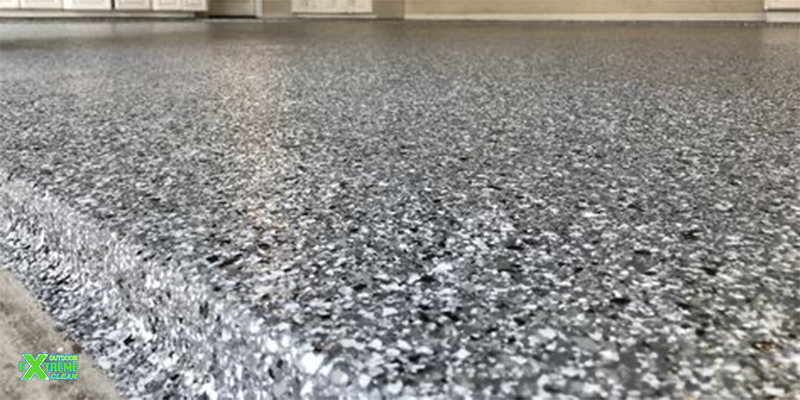Epoxy resin is a versatile material that comes with many benefits, ranging from high endurance in the face of pressure and physical activity, to low levels of shrinkage upon application. This versatility is what led to an increase in epoxy flooring in residential and commercial properties.
However, laying an epoxy floor isn’t foolproof. There are a number of environmental and user errors that can cause problems down the line.
If you’ve noticed that your epoxy floor is uneven, don’t stress. It’s not a lost cause.
With this guide you can learn more about how to fix uneven epoxy resin.
Why is My Epoxy Floor Uneven?
Cleaning and maintaining your epoxy floor is vital to make sure it continues to have the look you want over a long period of time. It’s important to understand the source of your flooring troubles. There are a number of factors that can contribute to a damaged or uneven surface when you’re handling epoxy resin.
Here are some common issues that you can compare with your own floor. That way, you can better identify what led to the issue in the first place and avoid the same issues when you redo your epoxy floor.
Sloped or Dimpled Flooring
Sloped flooring lowers steadily over several feet, while dimpled flooring may have a handful of lower points throughout the room.
In both instances, the issue is most likely with the floor itself, not the epoxy resin. In other words, your wood or concrete flooring has developed a slope or dimples, and the epoxy has conformed to it.
Peeling Epoxy
When epoxy doesn’t adhere to your substrate properly, it may begin to peel over time. When this happens, you might notice a “give” or bounciness in certain areas where pockets have developed between the epoxy and the floor below. Check around the perimeters of the room for areas where the epoxy has begun to peel.
There are a number of reasons why this could occur. Unstable temperatures or high levels of humidity can disturb the curing process, loosening the grip between your epoxy and your flooring. In some instances, it could be that the epoxy resin was not properly mixed, meaning that what was used on your floors wasn’t quite epoxy.
Epoxy Blistering
If your epoxy has blistered, you won’t just notice an uneven floor. You’ll be able to see the damage areas, which could consist of pinpoint-sized holes or large, unsightly cratering. Once these holes exist, your epoxy is weakened and vulnerable to further damage over time.
Like peeling, this blistering could be caused by a bad mix of epoxy resin. However, it could be that your substrate was not treated correctly before the epoxy was poured, leaving the surface too smooth or porous.
How to Fix Uneven Epoxy Flooring
No matter the issue at hand, you’ll see the best results if you bring in a professional to deal with your uneven epoxy floor. Epoxy resin is as temperamental as it is versatile.
However, if you want to give it a shot yourself, or simply want to understand how this process works, let’s look at the ways you can address each of the problems we’ve laid out.
Fixing Slopes and Dimples
If your floor is sloped from one end to another, the project at hand might be bigger than you anticipate. People often hope to use epoxy resin as an affordable floor-leveling solution.
However, depending on the severity of the sloping, you may need to sand down the epoxy completely and have your floors re-leveled. If the floor is concrete, you’ll need to pour a new, leveled layer of concrete over the existing layer. If the floor is wood, this unevenness may reflect a larger structural issue.
If you’re dealing with dimples, epoxy might be enough. Use a sander to remove the hardened top layer before laying down new epoxy. As the coat begins to dry, add more to the dimpled areas so that they are filled in and less uneven compared to the rest of the floor.
Fixing Peeling Epoxy
If the peeling is severe, it is best to remove it altogether using a floor grinder. Then, make sure that your substrate is clean and use the grinder to create a texture that will allow the epoxy to adhere properly.
Finally, make sure that you’re working under the right weather conditions. Excessive heat or cold will alter your epoxy chemically. If the room you are working in is humid, bring in dehumidifiers.
Fixing Epoxy Blistering
If your blistering is smaller, you might be able to add a new layer of epoxy without grinding down the previous layer. However, larger holes tend to trap in air that will rise to the surface of your new epoxy floor, which may have been the problem in the first place.
Blistering often occurs when the substrate is too porous and has air bubbles of its own. In this case, the epoxy needs to be sanded down so that the substrate can be treated, and these air bubbles closed off. It is best to hire a professional in this case, as there is a fine line between too porous and too smooth, both of which can cause future blistering.
Find a Professional for Your Epoxy Floor
If your epoxy floor is uneven, a number of things could be the source of your problem. Chances are, however, that the root of the issue is that it wasn’t laid properly in the first place.
Avoid dealing with similar problems in the future and have a professional address your uneven epoxy floor. Contact us and we’ll get started on your flooring right away.

